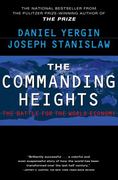Question
4. Parts of this question are not related. A. Suppose M = $100 Billion; V = 30; Y = $600 Billion; Use the quantity equation
4. Parts of this question are not related.
A. Suppose M = $100 Billion; V = 30; Y = $600 Billion; Use the quantity equation to solve.
What is the value of P? What is the value of nominal GDP? Now suppose V stays constant and Y stays constant, and that Quantity theory and Fisher Effect both hold, what happens to inflation, real interest rate and nominal interest rate if money supply grows by 5%?
B. Draw two diagrams of a small open economy model where the world interest rates are higher than domestic equilibrium rates. Now suppose people of France develop a strong taste for Canadian wines. Show what happens to demand for dollars, value of dollar and quantity of net exports as a result. Is there any change in NCO? Why?
C. Describe the economic logic behind the theory of purchasing power parity. Give two reasons why PPP does not always hold? Provide at least one example for each reason.
Step by Step Solution
There are 3 Steps involved in it
Step: 1

Get Instant Access to Expert-Tailored Solutions
See step-by-step solutions with expert insights and AI powered tools for academic success
Step: 2

Step: 3

Ace Your Homework with AI
Get the answers you need in no time with our AI-driven, step-by-step assistance
Get Started


